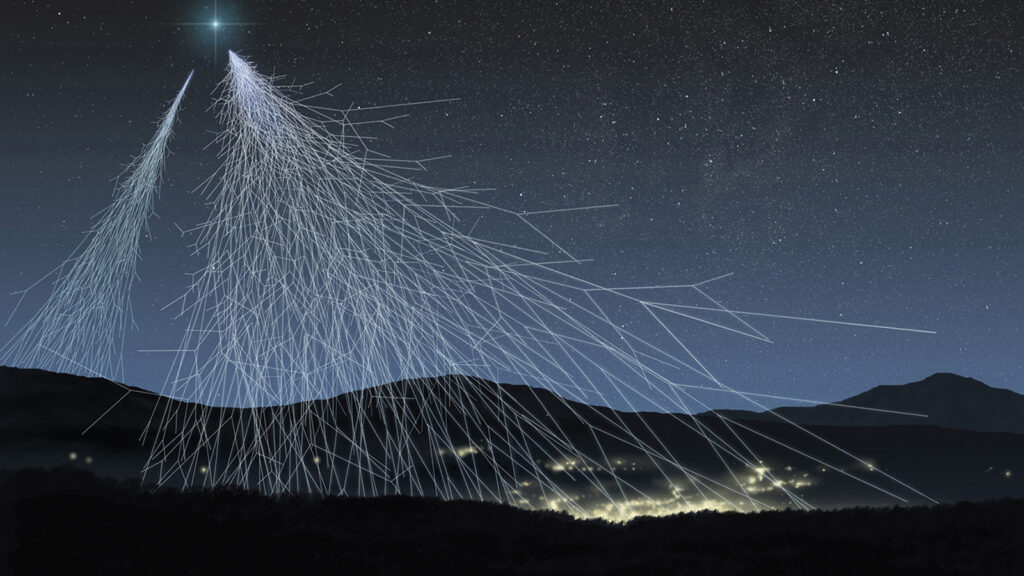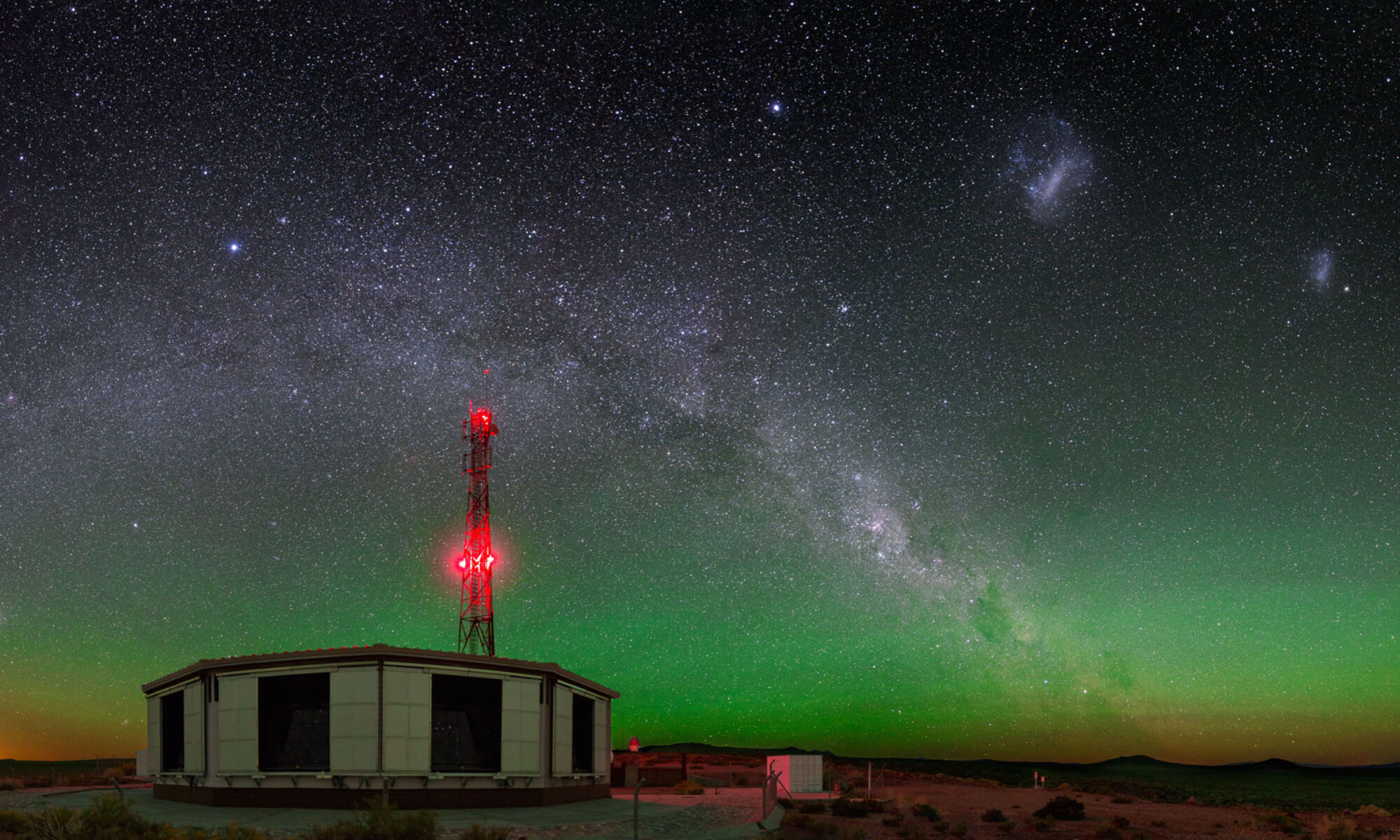Cosmic rays are highly relativistic particles that constantly rain down on us from outer space. The energy spectrum of cosmic rays extends over more than 10 decades of energy, following an almost perfect power law. The fluxes are quite large at low energies (about 1 particle/m2/second at 1 GeV) but extremely small at the highest energies (1 particle/ km2/century around 1020 eV).

When an high energy cosmic rays hit the atmosphere, it interacts producing a shower of billions of particles which can cover an area as large as 10 km2.
Cosmic ray physics has an already century long history! Motivated by the information these particles can bring us about the Universe, cosmic ray physicists study deeply all the features of this nearly featureless spectrum (the knee, the ankle, …). In experiments dedicated to the different energy ranges, they try to understand the origin (galactic, extragalactic, which sources?) and nature (proton, iron, photon, …?) of these particles.
At Auger we are interested in the far end of the spectrum: energies of the order of 1019 – 1020 eV, far above what is reachable in present and planned human made accelerators! These highest energy cosmic rays are a mystery and a challenge. There is no scientific consensus on how and where such energetic particles originate. In particular, for energies close to 1020 eV the interaction of cosmic rays with the cosmic microwave background should quickly degrade their energy. They should thus come from relatively close and in a straight line, practically not deflected by the galactic and intergalactic magnetic fields… But where are the sources?
Their extreme energy and mysterious origin makes very high energy cosmic rays a window to the Universe, but also an opportunity for particle physics. The first interactions in the atmosphere take place at energies in the centre-of-mass up to ~100 TeV, to be compared with the 14 TeV of the LHC! Of course the luminosity and detector capabilities are poor compared to accelerator experiments, but the window to high energies is truly unique.
